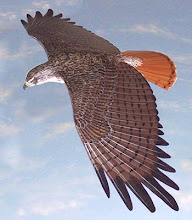Now You And I Are Going By
Joan Baez: All The World Has Gone By
The surface of the Colorado River drops 17 feet in a quarter of a mile across Granite Rapid. By contrast, the drop across the half-mile stretch of the river above Granite Rapid is imperceptible. This coupling of a fairly flat, tranquil liquid tread with a steep, turbulent foaming riser is repeated 160 times along the course of the Colorado River through the Grand Canyon. these 160 rapids account for only a tenth of the length of the river from Lee's Ferry to Lake Mead but fully half of the 1886-foot drop in river-level. This staircase on the water surface does not mimic a staircase in the riverbed. the watery staircase is a hydraulic effect of constriction at the rapids. Virtually all the rapids in the Grand Canyon occur where the Colorado River is constricted by debris fans at the mouths of tributaries. Because they are much steeper, tributaries are competent to deliver to the riverbed individual boulders and aggregate debris flows too large for natural floods of the Colorado River (much less the post-Glen Canyon Dam discharge maxima) to clear readily. The debris fan of Monument Creek was augmented in 1984 by a debris flow a tenth of a cubic mile in volume. This debris flow, triggered by slope failure after heavy rain, took only two minutes to deliver boulders nine feet in diameter to the fan.
The rock of the Inner Gorge at Mile 93 is all Vishnu Schist except for the prominent light-colored band cutting the cliffs. This straight band is a highly differentiated igneous sill composed of Trinity Gneiss, intruded into the schist late in the Mazatzal compressive episode, 1.7 billion years ago.
Dana Butte, 2680 feet above us on the skyline, is composed of vertical-walled Mississippian Redwall Limestone over Cambrian Muav Limestone. The saddle connecting the knob of Redwall Limestone at the end of the butte is a lens of Devonian Temple Butte Limestone.
--Robert Hutchinson
Doug Honeyford: Granite Rapid







<< Home